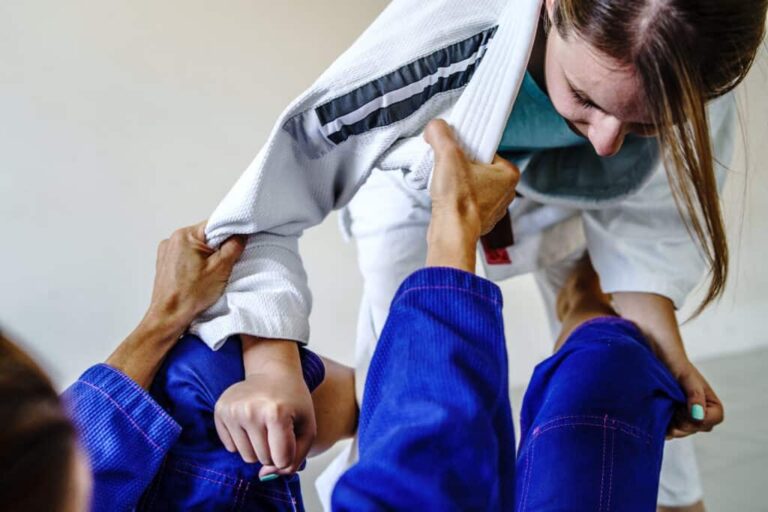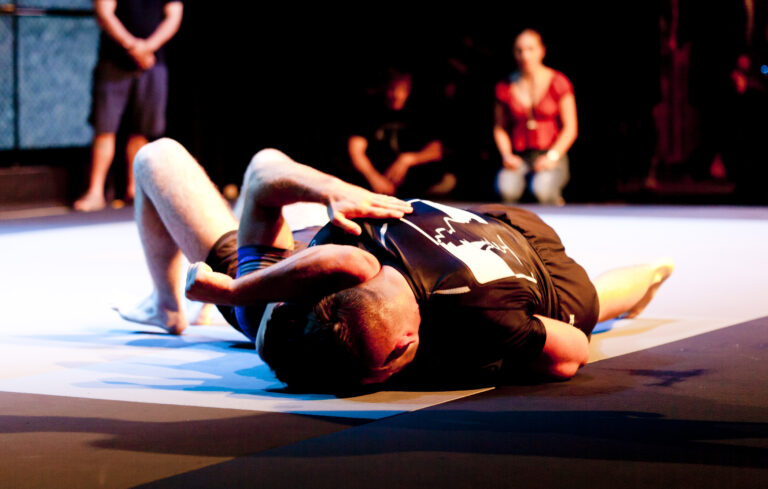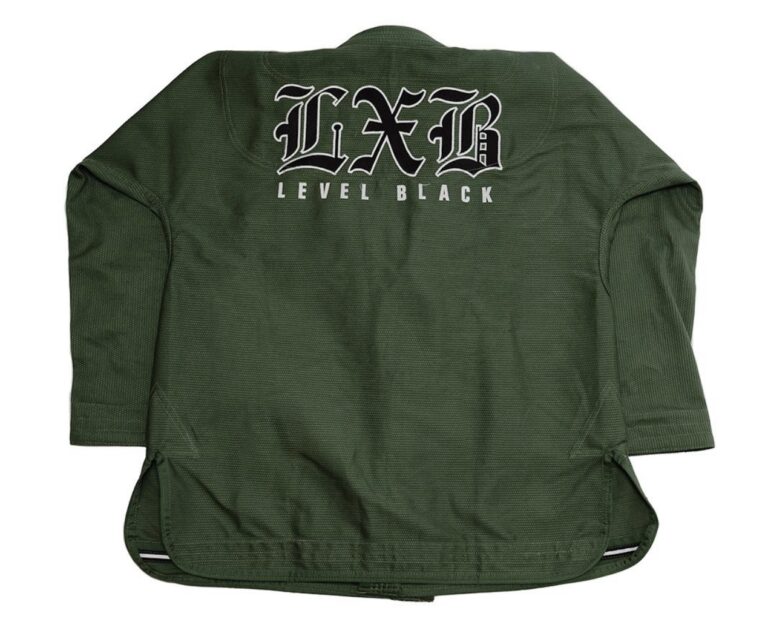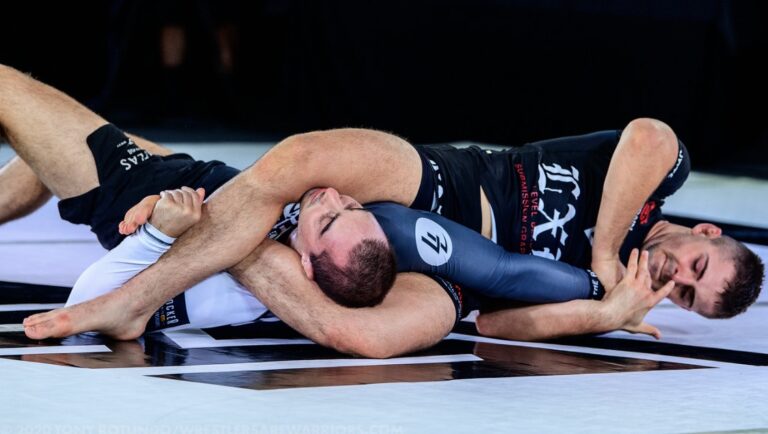BJJ FAQ: The Most Common BJJ Questions and Answers
Before starting BJJ you likely have a ton of questions. Or heck even after years of training you will still have a ton of questions. So with that in mind, I wanted to put together a guide to some of the most commonly asked questions about BJJ.
What Is the Average Price of BJJ Classes?

With the growth of mainstream mixed martial arts over the past three decades, Brazilian Jiu-Jitsu, or BJJ, has become incredibly popular. Today, more BJJ gyms are opening, and more people are signing up than ever before. But what’s the average price of BJJ classes?
The average price of BJJ classes is around $150 per month. However, class prices can be $200+ per month depending on the school’s reputation. The location, school’s prestige, length of your contract, and class specialization can impact the cost. For example, the average price for BJJ classes in New York will cost more than that in a small town in Indiana.
Average Monthly Cost Of BJJ Academies
Unlike your average fitness center, BJJ gyms require more commitment and hands-on learning. With that in mind, the payment structure is far different from a monthly Planet Fitness membership.
BJJ memberships almost always operate on a monthly payment basis.
While there’s a fairly large price range for BJJ classes, the average cost of BJJ classes is somewhere between $100-200 USD per month. However, BJJ lessons can cost well beyond $200, or they may be as low as $75 per month.
The price discrepancy might be mind-boggling at first. The truth is, that the cost of BJJ classes depends on quite a few factors.
Signing up for BJJ classes requires a hefty investment, so it’s good to know where your money goes. There are three primary ways your class payments are spent:
- The labor hours of the instructor are crucial. They’re likely the most expensive part of the process. If you have a respected, professional coach who’s sought after, it could cost well over $200 or more per month for BJJ classes at that gym. Credibility and expertise are everything, so expect to pay more for a pro-level instructor.
- You’re paying for a gym membership. You’ll work and train with sparring partners, coaches, and more. All gyms charge a fee, so it’s no surprise that your BJJ membership includes a gym fee. Some places offer a price breakdown, which might be worth checking out if you’re unsure where the money is going.
As you can see, there are many reasons Brazilian Jiu-Jitsu classes cost more than the average workout gym. BJJ is a long-term commitment, especially if you’re trying to work with expert-level coaches.
Can You Train BJJ Every Day?

Brazilian jiu-jitsu is a demanding sport that requires mental and physical toughness. As with all workouts, recovery time is required to prevent injuries, build strength, and push one’s limits. Whether you’re a beginner or an expert, it might be tempting to train BJJ every day to improve your skills on the mat.
You can train BJJ every day, but it’s recommended that you stick to 3 to 5 training sessions per week. Brazilian jiu-jitsu can be rough on your body, so it’s essential to rest for a few days. If you want to train daily, it’d be best to keep your gym sessions short and light for half of the week.
In this post, we’ll explain why you shouldn’t train daily (for most people), how often the ideal BJJ schedule requires training, tips to improve your recovery in between training sessions, and more.
Is It Okay to Train BJJ Daily?
Training BJJ every day might seem like a good idea if you want to seek the most improvement. However, injuries, exhaustion, burnout, and many other problems are a result of hitting the gym too often. If you’re thinking about taking Brazilian jiu-jitsu classes every day of the week, consider the following tips:
- Keep the sessions short and light on some of your training days. If you want to train BJJ every day then you need to have some light days. This might look like simply drilling technique and flo rolling. Many people find it easier to go slow and work through the motions with a sparring partner rather than putting 100% effort into every session.
- Consider dedicating a specific transition or submission per day. Instead of confusing yourself with the dozens of movements found in a BJJ class, why not focus on takedowns earlier in the week and submissions later in the week? This layout will keep you prepared for every match.
- Focus on weekly improvement rather than jamming everything into each session. Your goal shouldn’t be to beat the previous day but rather the previous week. We all have off days, so it’s important not to worry too much if you’re training seven days in a row.
- You could train some of the days at home using BJJ Instructionals, virtual coaches, training partners, and more. BJJ lessons can get expensive, which is why a lot of people are leaning on other methods such as learning BJJ online.
- If you notice unusual amounts of pain, soreness, or stiffness, take it back a notch. Training every day can put unwanted stress on your mind and body. There’s no need to go overboard, especially if you’re a beginner. New exercises and working muscles you haven’t will make you prone to injuries if you’re not careful.
Most People Should Train 3-5 times per week
Most people should train 3-5 times per week if possible. Unless you are a full-time jiu-jitsu athlete most people cannot handle much more than this.
If you are looking to become a pro grappler or BJJ world champion then you might be training every day and sometimes multiple times per day.
You have to consider your personal goals and everything else in life you need to balance. That said, training BJJ six times per week does not mean you will progress twice as fast as someone going three times per week.
Daily Training Doesn’t Always Equal More Improvement
Hitting the BJJ classes every second of every day won’t always make you better; sometimes It’ll end up doing much more harm than good.
You’ll regret it because you won’t have to rest, recover, and enjoy the process. Getting enough downtime will let you appreciate each session so that you can approach it with more intensity and focus.
Some people find it easier to train twice weekly, whereas others need five days every week to see noticeable improvements. It’s up to you to find out how often you should take BJJ classes.
Can You Teach Yourself Jiu-Jitsu?
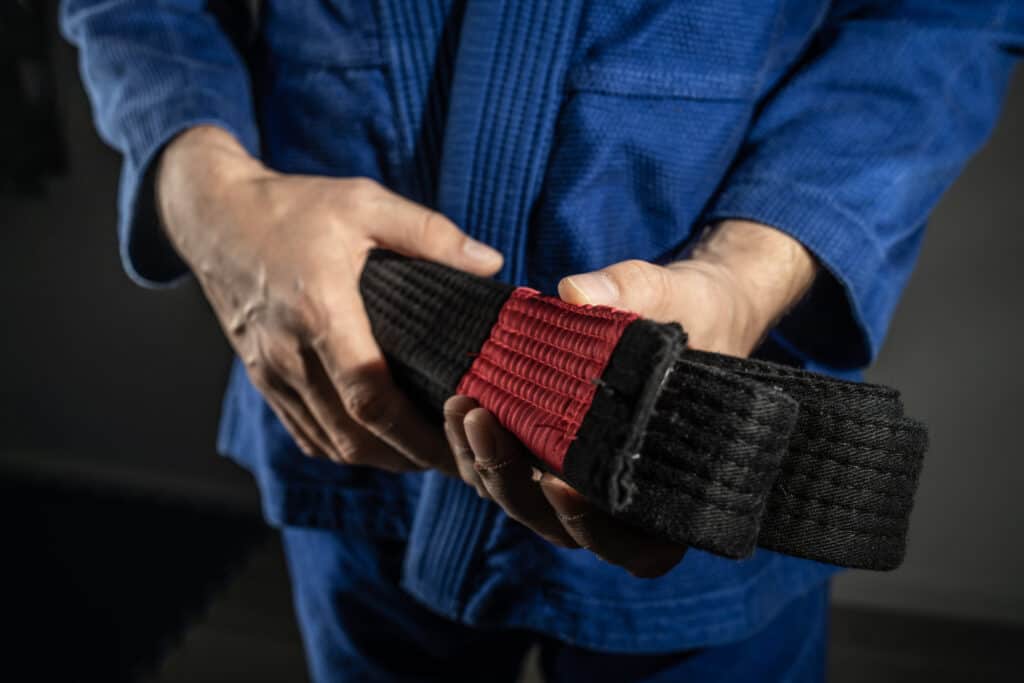
In some places in the world, it can be very difficult to find a good Brazilian jiu-jitsu school. Heck and even if you can find one it is not cheap and often people have a hard time making it work with their schedule. If they only provide evening classes this might not work for someone who works nights. This gets many people wondering if you can teach yourself jiu-jitsu.
You can learn some jiu-jitsu by yourself but in reality, you need a teacher who can make sure you are executing techniques properly.
Of course, many concepts in BJJ can be self-taught through books and online courses. But you need a teacher as well as other students to train with.
Without a proper instructor, you could be doing many things incorrectly which could be at the very least ineffective and at worst dangerous.
If you were hoping to be able to teach yourself jiu-jitsu this is probably not the answer that you would like to hear. But don’t lose hope just yet as there is probably something you can do to still be able to learn BJJ even if it is hard to make it to class. We will discuss some options later but first, let us discuss why you need a BJJ instructor.
The Truth About Self-Taught Jiu-Jitsu
There are many reasons that you probably don’t want to try and teach yourself jiu-jitsu. Like with any skill you can of course learn many concepts by yourself. But trying to learn BJJ without a teacher is not the best idea.
Jiu-jitsu is a complicated martial art that has many details that probably will go unnoticed without proper instruction. You can, of course, learn a lot on your own but simply watching videos without any experience might just cause you to learn bad habits.
Anyone who has access to a BJJ school who wants to learn the art should sign up for classes from a qualified instructor. I understand that it might be too expensive or hard to make it to classes. But trying to teach yourself jiu-jitsu without ever having a teacher is almost never a good idea. A good coach will help you understand the concepts of jiu-jitsu in a safe environment.
After you have been training under a good teacher for some time, teaching yourself jiu-jitsu through online programs and books becomes much easier. This is because you will have a solid foundation of the basic concepts of BJJ.
Can You Teach Yourself Jiu-Jitsu Through Instructionals?
You can learn just about anything online these days. So would teaching yourself jiu-jitsu through online programs be any different? Well, the answer would be both yes and no. Of course, you can learn jiu-jitsu online but you still need to put what you learn to the test.
Not only do you need a teacher who can help make sure you are executing the details properly, but you also need training partners who you can roll with. You can watch instructionals until you are blue in the face but if you are not getting out there and trying the techniques out on real people then you are never really learning them.
What matters is that you can execute the techniques that you are learning through online courses. But as long as you are attending classes and getting rounds in with other practitioners then, of course, you can learn a lot of jiu-jitsu by yourself through online instructionals.
The thing is you need to actually take what you learn from the course and start executing the techniques in real life. That said, instructionals can be a great way to learn jiu-jitsu during your free time. It can also help you stay up to speed if you can’t make it to class as often as you would like because of scheduling.
What Are The Best And Worst BJJ Positions?
There are different positions in BJJ. Some are considered good dominant positions, some are pretty neutral, and some are poor positions to be in.
BJJ Positions From Best To Worst
- Rear Mount
- Top Mount
- Top Knee On Belly
- Top Side Control Top
- Top Half Mount
- Guard Top and Guard Bottom ( Considered Neutral )
- Turtle Top And Bottom
- Half Guard Bottom
- Side Control Bottom
- Knee On Belly Bottom
- Mount Bottom
- Rear Mount Bottom
As you can see the very best position is opposite the worst position. This is because if you are in the best position the rear mount top that means your opponent is in the rear mount bottom.
The second best position is the top mount the second worst is the bottom mount and so on. If you follow this process you will get to the guard which is considered a neutral position.
Is Guard A Good Position In BJJ?
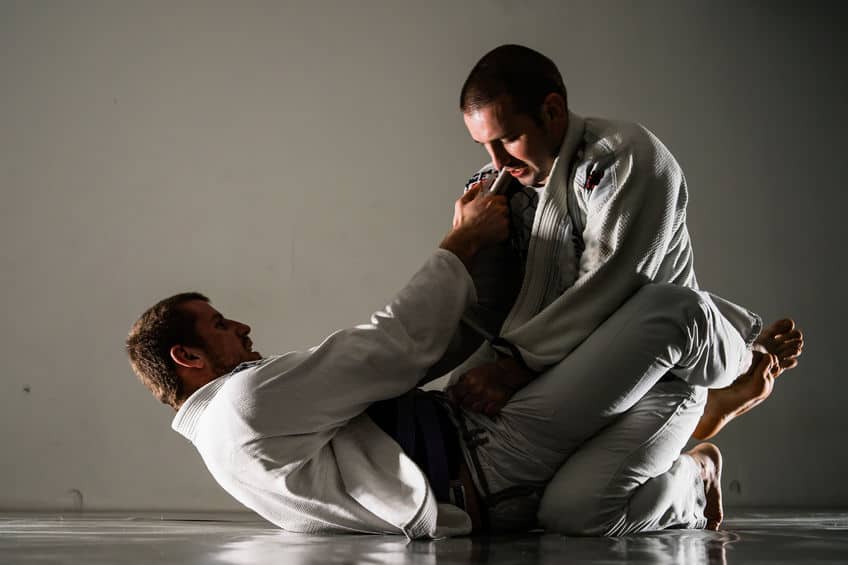
In BJJ there are a variety of positions that a player can be in. Some positions are considered good positions and some are considered bad. However, there is some debate as to whether or not guard is a good position in BJJ.
Guard in BJJ is neither good nor bad but is considered a neutral position. There are both top and bottom guard in BJJ both being considered equally advantageous.
That being said, it depends on the game you like to play. I like to play the top game in BJJ so I would personally rather be in top guard than bottom guard.
Why Guard Is A Neutral Position In BJJ
The guard is one of the few positions considered neutral in BJJ. Which is better depends on the game the player likes to play.
The bottom guard is at a disadvantage because the top player can pass the guard into a superior position.
However, many people prefer the bottom guard because there are more attacks and sweeps from the bottom guard. On the other hand, there are very few attacks from top guard in BJJ.
Different positions are always going to be considered superior positions in BJJ. Understanding the positional hierarchy in BJJ will help you understand which positions are better than others.
Which Wrestling Takedowns Can You Use In BJJ?

Before getting into BJJ many people are already coming from a grappling background. For example, here in the United States, many people are coming from a wrestling background. With this in mind, many wrestlers want to know if they can use their wrestling takedowns in BJJ.
Thankfully, you can use many wrestling takedowns in jiu-jitsu! Wrestling takedowns are very effective in jiu-jitsu but some takedowns might need to be slightly modified.
This is because like in wrestling you do not wear a gi. So you do not need to use gi grips to take down your opponent with wrestling takedowns. On the other hand, if you are focused on gi BJJ then you will also want to learn takedowns from judo.
That said, you can use wrestling takedowns in BJJ but you might want to simply modify them to work better with BJJ. This is simply to avoid getting submitted or to put yourself in a vulnerable position.
How To Adapt Your Wrestling Takedowns For BJJ
Except for in catch wrestling, you do not need to worry about submissions in wrestling. Because of this, it can be natural for wrestling to put their head in a bad position when going for a takedown on a BJJ expert.
For example, a wrestler might use a double-leg takedown and a BJJ expert and quickly find themselves in a guillotine choke. This can of course be avoided by keeping your head in the right position when using a wrestling takedown to bring your opponent to the ground.
You will also want to be careful using a wrestling takedown that might expose your back to your opponent or have you land in a bad position in BJJ.
But all in all, there is nothing to worry about once you learn how to adapt your wrestling takedowns for BJJ.
What Wrestling Takedowns Are Not Allowed In BJJ
In addition, some takedowns would be considered illegal slams in BJJ that might be allowed in some forms of wrestling.
A suplex, for example, is allowed in freestyle and greco-roman wrestling but is not allowed in most BJJ competitions.
Most wrestling takedowns that are performed in one continuous motion are allowed. But you do need to understand the differences between illegal slams and takedowns in BJJ.
For example, you cannot lift someone off the ground take a pause, and then slam them on the ground. You also cannot pick someone up from the guard or back control and slam them onto the ground.
These are illegal slams and unlike most other wrestling takedowns, they are not allowed in IBJJF BJJ competitions.
That said, there are different rules for different organizations. The ADCC for example allows for variations of the suplex but still does not allow all other slams.
What Are The Best Wrestling Takedowns For BJJ?
There are a ton of takedowns, throws, and trips you should learn for BJJ. That said, you have to start somewhere. These three are simply some of the most effective wrestling takedowns to learn that are also not overly complicated.
Of course, there are many other effective wrestling takedowns for BJJ but it is better to start by mastering just a few. Once you got a few wrestling takedowns and a few judo throws mastered then you should add more takedowns to your arsenal.
#1 The Double Leg Takedown
The double leg is probably the most used takedown in MMA, BJJ, and wrestling. It is not only a very effective takedown, but it is also very easy to learn.
You can do this technique with or without the gi since it does not require you to get grips on a gi. For this reason, it should be in the arsenal of all grapplers and mixed martial artists.
Here is an example video for a double leg takedown. However, there are many variations of the double leg takedown that you can use in BJJ.
#2 Single Leg Takedown
Another very common takedown is the single-leg takedown. There are a few ways to execute the single-leg takedown.
Many people who come from a wrestling background are familiar with the single-leg takedown.
However, if not done correctly you could find yourself in a guillotine choke. With this single-leg variation, you will be more likely to avoid the guillotine.
Is No-Gi More Realistic Than Traditional Gi Jiu-Jitsu?

Whether you are getting into martial arts for self-defense or for sport, you often need to learn how to separate what is for sport and what is for self-defense.
When it comes to jiu-jitsu there is a big debate on which is more realistic between gi and no-gi jiu-jitsu. After all, it’s not like people are walking around in a BJJ gi on the streets.
The truth is no-gi is not more realistic than traditional BJJ. Though people are not walking around in gis on the street people are wearing clothing and learning how to grapple in clothing can be very effective. That said if you want to be prepared for a real situation it is best to train in both gi and no-gi jiu-jitsu.
People often say that no-gi is more realistic than traditional BJJ because wearing a gi is unrealistic. However, the biggest problem with only learning no-gi for real-life situations is that you are not allowed to grab any clothing in no-gi. Using grips on pants or even sleeves is very realistic.
Why No-Gi Is Not More Realistic For Self-Defense
As we have already discussed people are not walking around town in jiu-jitsu gis. However, depending on where you live people might be wearing something similar to a gi a good portion of the year. This is especially true if you live in an area with long winters and people often wear heavy jackets.
A heavy winter jacket has a lot of similarities to a BJJ gi or a judogi. With that in mind, learning throws, as well as chokes, and other techniques using clothing, are realistic for self-defense. The same goes for people wearing suits or other similar jackets as well.
Just this weekend I was in my friend’s wedding and while we were getting ready I could not help but think of all the ways you could use a suit in a real-life situation. A cross collar, Ezekiel, and a bow and arrow choke are just a few realistic submissions you could use on someone wearing a suit jacket.
One area that can be very beneficial for self-defense is sleeve grips. If you get attracted by someone with long sleeves you might be able to use sleeve grips to control your attacker. You can use sleeve grips to prevent them from raining punches down on you.
Is No-Gi Jiu-Jitsu Better For MMA Than Traditional BJJ?
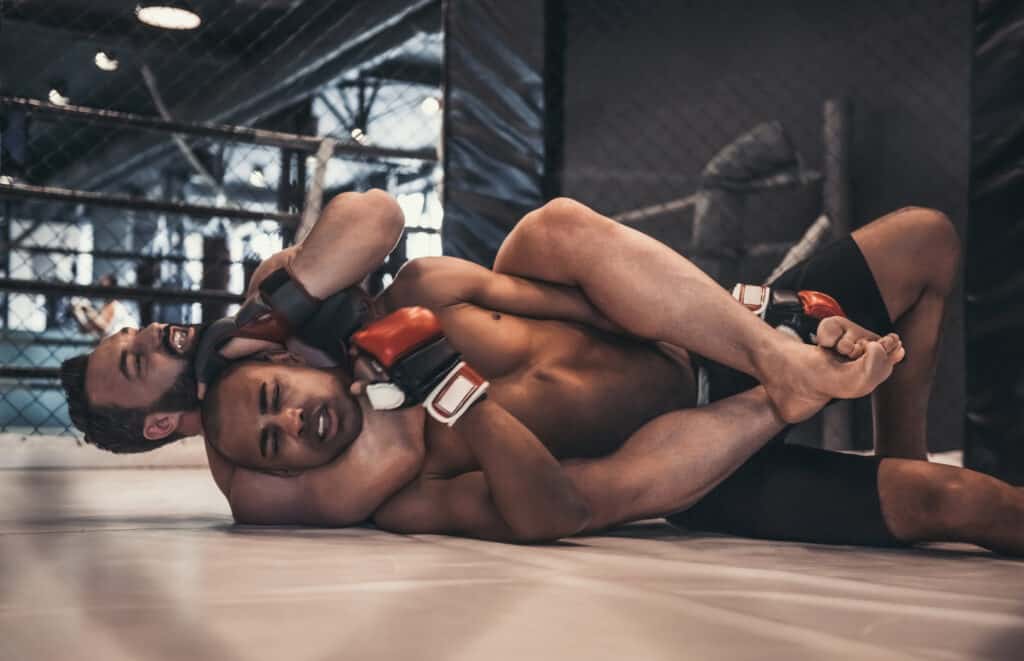
With the recent popularity of no-gi jiu-jitsu, many people are starting to wonder if no-gi is better for MMA. After all, MMA fighters do not fight in the gi. So is there any benefit for them to train in the gi for MMA? Or is no-gi jiu-jitsu better than traditional BJJ for MMA?
Most people would agree that no-gi jiu-jitsu is better for MMA than traditional BJJ in the gi. This is especially true for MMA fighters today because they need to be well-rounded. MMA fighters do not fight in gis, so spending time on submissions and throws using the gi could be better utilized elsewhere. For those reasons, no-gi is going to be better for MMA fighters.
This is not to say MMA fighters should never train in the gi. Some would argue that training in the gi can make your No-Gi game better.
However, when you have a limited amount of time to become proficient in multiple martial arts you are probably better off working on your striking than practicing a cross-collar choke that you will never use in an MMA fight.
Why No-Gi Is Better For MMA
As previously stated the main reason that no-gi is better for MMA is because it is more closely resembles the attire you will wear in MMA. Since you don’t wear a gi in MMA, many of the submissions and throws using the gi cannot be utilized.
This is not to dismiss traditional BJJ by any means. If you are learning BJJ for self-defense then there are plenty of reasons to learn how to grapple in the gi.
I understand that in real life people are also not walking around in gis either. That said, more often than not people are going to be wearing some sort of clothing. If not then you are probably hanging out with the wrong crowd.
